I want to visualize a graph that represents some geographical map. As such, the edges of my graph are associated with the compass rose (north, south, east, west). The graph itself is directed and can be made acyclic.
For example I have nodes: House-1, House-2, House-3 with edges [House-1, north-of, House-2], [House-2, east-of, House-3].
I'm looking for a layout algorithm that can be made to understand the compass rose (perhaps as hints?)
I've gone through JUNG, JGraph, GraphViz and none seem to do what I want but I may have missed something.
Any suggestions?
